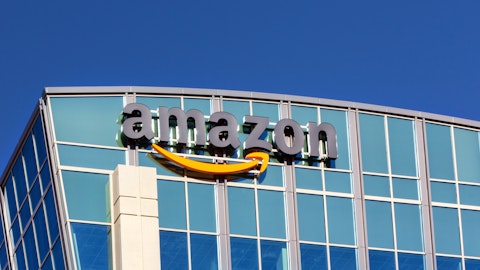There are different kinds of investment strategies out there in the market, so individual investors usually employ a wide range of investment techniques and stock selection approaches. Numerous quantitative-oriented investors employ “screens” to select their stock picks, which simply means that they choose a select group of stocks that meet certain criteria. Of course, this approach can significantly simplify an investor’s stock selection process, but investors can pass up some high-potential investment opportunities by selecting stocks based on specific criteria. So why not focus on the basket of stocks that attracts the most hedge fund interest? At the end of the day, the 50 most-owned stock among hedge funds have beaten broader market gauges on a quarterly basis roughly 64% of the time during the period of 2001 through 2015. With this in mind, let’s take a look at the recent hedge fund activity surrounding Comcast Corporation (NASDAQ:CMCSA).
Comcast Corporation (NASDAQ:CMCSA) investors should pay attention to an increase in hedge fund interest recently. The level and the change in hedge fund popularity aren’t the only variables you need to analyze to decipher hedge funds’ perspectives. A stock may witness a boost in popularity, but it may still be less popular than similarly priced stocks. That’s why at the end of this article we will examine companies such as Medtronic, Inc. (NYSE:MDT), Cisco Systems, Inc. (NASDAQ:CSCO), and Philip Morris International Inc. (NYSE:PM) to gather more data points.
Follow Comcast Corp (NASDAQ:CMCSA)
Follow Comcast Corp (NASDAQ:CMCSA)
According to most shareholders, hedge funds are assumed to be underperforming, outdated financial vehicles of years past. While there are more than 8000 funds with their doors open at the moment, We look at the bigwigs of this group, about 700 funds. These money managers direct the majority of the smart money’s total asset base, and by observing their unrivaled stock picks, Insider Monkey has come up with many investment strategies that have historically outstripped Mr. Market. Insider Monkey’s small-cap hedge fund strategy outrun the S&P 500 index by 12 percentage points annually for a decade in their back tests.
The shares of the global media and technology company have advanced by 5% since the beginning of 2016, but they are still down 1% over the past 12 months. The cable giant was recently caught up in the middle of a broader market sell-off, which pushed the stock to more attractive levels. Anthony Bozza’s Lakewood Capital Management laid out an in-depth analysis and overview on Comcast Corporation (NASDAQ:CMCSA) in its fourth-quarter letter to investors. The letter said that “Investor concern [regarding Comcast] is largely centered on the rise of streaming video providers like Netflix and the resulting risk of customers cancelling their cable video service, commonly called ‘cord-cutting’.” Indeed, the company’s number of residential video customers dropped to 22.35 million from 22.38 million during 2015 due to competitive pressures and rate adjustments. However, the company revealed a net gain of 89,000 video customers for the fourth quarter, so Comcast may experience a lower-than-expected decline in the number of residential video customers over the next years. Lakewood Capital also suggested that investors should not be overly concerned about the decline in video customers, saying that: “Although roughly half of Comcast’s cable revenue comes from video, we believe the potential impact to earnings from this issue is rather minor. Video is actually the lowest margin revenue source in the cable business due to the significant associated programming costs that are paid to third-party content providers in contrast to voice and data revenues that have virtually no variable costs. We estimate that video represents only around 20% of cable operating profit once all costs are allocated. Also, while certain consumers may opt to ‘cut the cord,’ we believe the overwhelming majority of customers believe the cable bundle still provides good value. Importantly, customers who do opt to forgo a bundled video product still need to subscribe to a standalone broadband product, which is more expensive than broadband taken as part of a double or triple play offering. In fact, consumers that are heavy users of streaming video will likely have to upgrade to even higher priced standalone broadband tiers due to their increased data requirements.”





